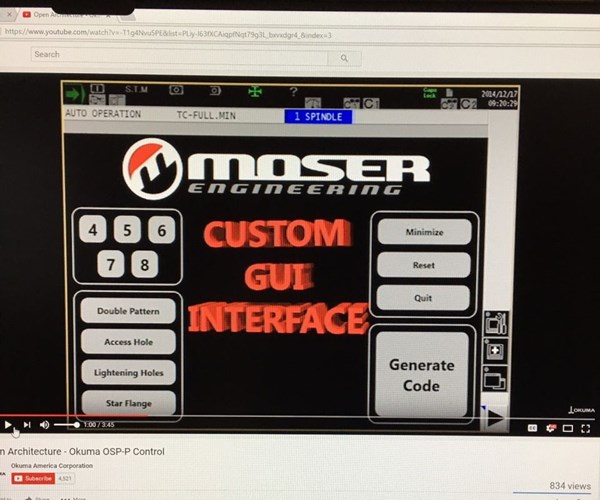Dodging the Skills Gap in CNC Programming
Sometimes the search for fresh, new and skilled employees is like a game of dodgeball.

A little ingenuity and adaptable technology helped one company bridge a CNC skills gap.
Sometimes the search for fresh, new and skilled employees is like a game of dodgeball. You throw the ball (your recruitment efforts) out into the arena (your geographical location, probably including local schools and junior colleges) to see if anything hits. If you make a point, a new and promising employee is hired who can hit the ground running. But often, as is the case with one company that needed CNC machinists who could get to work quickly, you miss. It’s a game called “skills gap dodgeball” that’s still predominant across North America.
The company I’m referring to is called Moser Engineering, a manufacturer of performance axles and aftermarket rear end components for the auto racing industry, located in Portland, Indiana. MMT received a press release about Moser from Okuma America Corp., the U.S.-based arm of the maker of machine tools based in Japan. According to the Okuma press release, Moser had operators without a lot of CNC machining experience, and they needed to find a way to make the user process on their machine tools as easy as possible. “They wanted a process that eliminated human errors that came about when programming manually at the control,” Brad Klippstein, Controls Product specialist, says. Gosiger, an Okuma distributor, worked with Moser to help bridge the skills gap in CNC machining by using some good, old-fashioned engineering ingenuity. They took Okuma’s customizable CNC control and created a GUI interface in order to take setup and programming errors out of the CNC operators’ hands and, instead, provide them with easy part programming guides.
“Creating programs in under 30 seconds and hitting ‘cycle start’ allows Moser’s operators to not worry about storing thousands of programs or trying to call up the correct one. They also do not need to worry about interference issues since it is taken care of by the macro programs,” Klippstein says. “This GUI interface eliminates the need to worry about common problems when programming or troubleshooting at the machine. This solution was made by Gosiger and Moser Engineering on our open architecture OSP controls.”
Okuma actually published a video on YouTube about how they helped Moser Engineering solve its skills-gap issue, and you can find it here. These kinds of stories remind us about the level of engineering expertise that exists in our industry; and it also provides a wonderful example of the creativity and problem-solving skills.
Related Content
-
Mold Builder Uses Counter-Intuitive Approach for Mold Challenges
Matrix Tool Inc. answers customers’ hard questions with creative solutions for cavity spacing, tool sizing, runner layout and melt delivery that reveal the benefits of running in a smaller press size at lower cavitation but higher yield.
-
Editorial Guidelines: Editorial Advisory Board
The Editorial Advisory Board of MoldMaking Technology is made up of authorities with expertise within their respective business, industry, technology and profession. Their role is to advise on timely issues, trends, advances in the field, offer editorial thought and direction, review and comment on specific articles and generally act as a sounding board and a conscience for the publication.
-
The Trifecta of Competitive Toolmaking
Process, technology and people form the foundations of the business philosophy in place at Eifel Mold & Engineering.
.png;maxWidth=970;quality=90)















